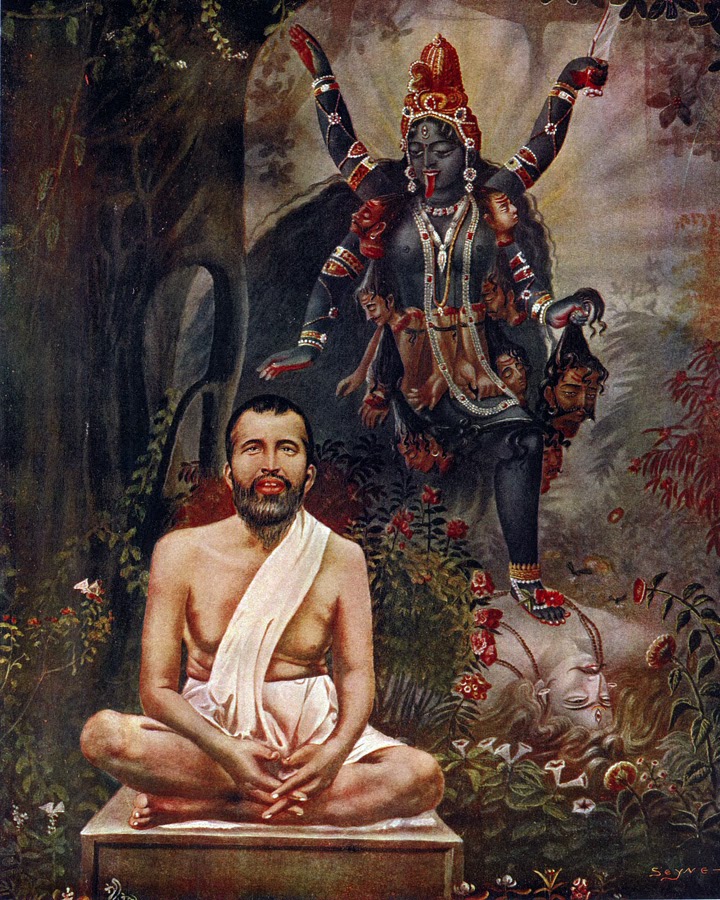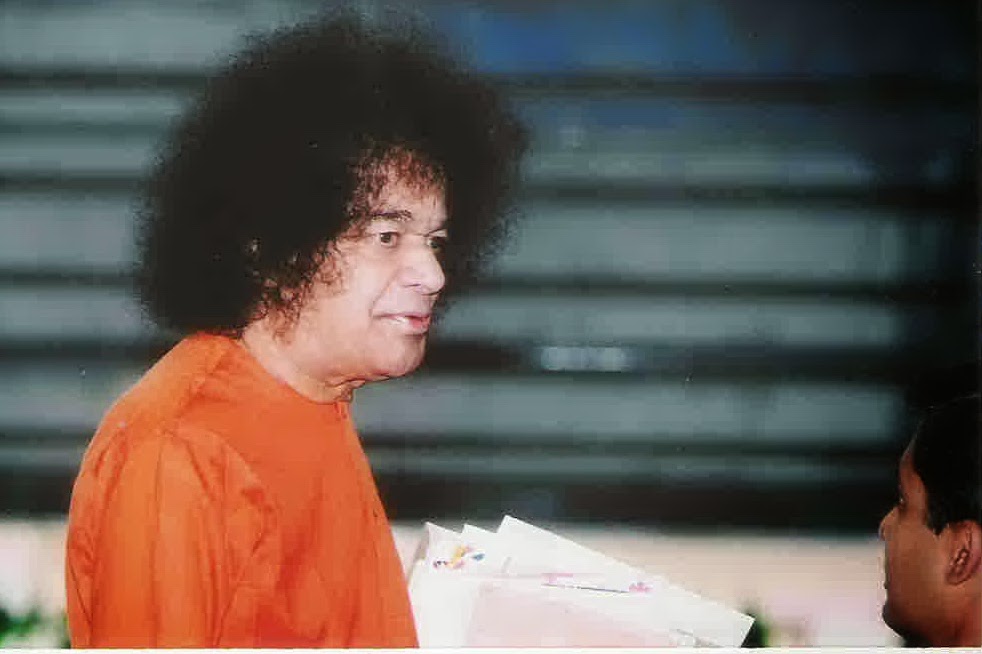Nature beckons
The rains had arrived in great bounty over the parched and summer-scorched landscapes around Puttaparthi. A lush-green, velvety carpet seemed to spread over the hard, dry earth. Standing by the window at home, I looked at the looming hill, nicknamed Shiva, standing majestically beside a slightly smaller hill, Parvati. This Indian habit of naming anything beautiful and majestic after different gods and goddesses had got into my colleagues at the Prasanthi Digital Studio too. Thus, the otherwise ordinary hills near the neighboring village of Karnatenagepalli had got these divine names.
The sight of the lush green hills was too much for me to contain. My heart erupted in joy and I felt a strong desire to wander into the green and peaceful embrace of these hills. As the sun mellowed down from a harsh afternoon into a pleasant evening, I mounted my bicycle and was on my way towards the hills. Nature, in all its majesty, is such a powerful intoxicant and attractant for me. It just pulls me with such spontaneity and urgency that I drop whatever I am doing and get drawn to it.
The inspiration was great but the cycling was not that easy. 3-4 kilometers of country road which went up and down soon had beads of perspiration dripping from my forehead. I reached the edge of the grounds beyond which there was no navigable road. From here on, the journey had to be made on foot. I dismounted, parked the cycle and started off.
The path here was quite bad. Strewn with thousands of rocks and pebbles, it presented quite a danger of a slip and a fall. Adding to this was the fact that my feet were in ‘slip’pers instead of in shoes. Naturally, I began to place each foot after testing the ground. My progress was slow and laboured and my mental focus was at its peak. The perspiration continued and I realized that it was one thing to gaze at nature from the comforts of home but a totally different thing to be a part of it and explore it.
In fact, I now began to ponder over the spontaneity and impulsiveness of my decision. Wasn’t it a mistake to have walked this path? Nature looked quite good from home and so, where was the need to have ventured out? My mind was soon a muddle of such thoughts as my body battled the harsh terrain in its bid to maintain balance and control.
Drama of Life
It would be a good idea to leave my huffing and grunting on the hill slopes for a while and enjoy an interesting episode which concerns my master and best friend, Bhagawan Sri Sathya Sai Baba. That would definitely be more ‘dramatic’ than my plight on the path. The episode dates back to the November of 1998 when Swami (as He is reverentially and endearingly called) was in the Poornachandra auditorium with a group of students preparing for that year’s Convocation drama.
For those that have come in new, the Convocation Drama is an annual cultural event enacted mostly by the senior-most students of the Sri Sathya Sai Institute of Higher Learning on the 22nd of November. The drama has an audience running in tens of thousands and Swami has always given its theme, dialogues and actors the greatest importance. As a matter of fact, Swami would often attend the rehearsals of every scene in the drama several times. He would select the costumes, check the script, compose songs and even make subtle changes in the plot to make the drama a wholesome and entertaining spiritual food for the audience. So much was His involvement in the drama that it was indeed a marvel at how He could sit and watch the same drama, completely engrossed, on the 22nd of November every year.
 |
Deepak Anand in his costume
as Ramakrishna Paramahamsa. |
Ah! Now coming to the main story. In the year 1998, the drama had a scene from the life of Swami Vivekananda and Sri Ramakrishna Paramahamsa. Deepak Anand, currently a doctorate in the School of Business Management at the Sri Sathya Sai Institute of Higher Learning, then a student of the same Business School, was chosen by Swami to act the role of Ramakrishna Paramahamsa. As expected, a major part of the role included the devotion of the saint towards his ‘Maa’, his mother, the Goddess Kali.
Ramakrishna and his Krishna
The rehearsals began and soon, Swami was involved completely in the planning and practice of the drama. When the scene involving Ramakrishna came, Swami looked at the altar and asked,
“Why is there no idol in the shrine?”
Getting a statue of Goddess Kali is not easy in this part of the country. That was the reason why no idol adorned the altar. Swami went and fetched a statue of Lord Krishna. Giving it to the teacher-in-charge, he said,
“Here is the Krishna which Ramakrishna will worship. Place it in the altar.”
The teacher-in-charge did as he was told but he realized that Swami was making a rare ‘mistake here - Ramakrishna was a devotee of Mother Kali and not of Lord Krishna. Maybe Swami had got ‘confused’ because of the ‘Krishna’ in the saint’s name!
The next day, an idol of Goddess Kali was brought. Swami glanced at the idol. Mother Kali, baring her blood-red tongue stood over the carcass of the demon she had slaughtered. A garland of human skulls adorned her neck and a huge sword shone in her hand.
“No! Place the Krishna statue in the altar and continue the practice.”
 |
An artist's impression of Sri Ramakrishna Paramahamsa and Mother Kali. The fearsome
form of the Goddess can be seen clearly. |
Now the teacher was in a fix. If Swami were to insist on keeping the Krishna statue in Ramakrishna’s altar, it would be historically inaccurate. He tried to point out the error but Swami would listen to none of it. The teacher even tried replacing the Krishna idol with a smaller one so that the ‘error’ would not be noticed by a large section of the audience that were far from the stage. Swami did not agree to that too. He wanted that same Krishna idol to be in Ramakrishna’s altar. On his part, Deepak Anand, continued to improve on his acting with each passing session. He seemed to keep himself totally out of the Kali-Krishna controversy. Swami showered special attention and grace on him, telling him in detail about Ramakrishna Paramahamsa’s love for Mother Kali. Though He had bestowed a mantra for this boy to chant as his personal sadhana, Swami changed it into one on the Mother. He told him to chant the mantra on the Mother for the next few days. The boy was in bliss and felt his love for the Mother grow by leaps and bounds every passing day. In spite of all this, Swami stood firm on His decision on Krishna.
The unexpected turn
A couple of days before the actual drama, when everyone had resigned to having the idol of Krishna in the altar, Swami came up with a surprise packet. He asked for the Krishna idol to be replaced with the idol of Goddess Kali! He said that Ramakrishna Paramahamsa was a devotee of the Mother and it didn’t make sense to have the idol of Krishna in his altar.
Everyone was relieved. Finally, Swami seemed to have realized His error. Before He could change His mind again, the idols were quickly exchanged and everyone smiled at each other. It was only after Swami left that every person of the drama troupe came to know the secret behind Swami’s error. The secret came as a revelation from an overwhelmed Deepak Anand.
“When I saw the idol of Mother Kali, my feelings were of fear and even a little disgust. I wondered as to how I would be able to inculcate feelings of devotion and yearning towards such a fearsome and fiery form. Even as I was thinking thus, Swami brought in the beautiful idol of Krishna, my family deity. The connection and bonding was instantaneous for me. In the meanwhile, Swami Himself worked on my love and devotion towards the Mother. Incessant and intense chanting of the Mother’s mantra and hearing about Her from Swami stroked a deep and intense love in my heart. Today, I could see the change. When the idol of Mother Kali was brought to the altar, I did not see an idol, but my Mother, the object of my deep devotion and love.”
 |
Swami with the students after the finale of the 1998 Convocation Drama. Deepak Anand can be seen clutching on to
Swami's right elbow, straining to remain in the frame. |
Everyone was stunned by this revelation! They could not imagine in their wildest thoughts the wisdom behind Swami’s apparent mistake. What a Masterstroke Swami had played! Now, everyone was lost in admiration for His subtle and beautiful ways. Being very ‘focused’ often makes one narrow in one’s vision. Broadening of one’s vision enables one to see the beauty that otherwise is missed.
Trekker’s Delight
The memory of Deepak Anand’s inspirational experience brought a little smile on my sweaty face. I decided to take a little break from my trekking and catch my breath. As I stood still, my eyes raised from the path they had been so diligently focusing on all this while. And then, what I saw took my breath away.
The hills and the dales that spanned before me were beautiful beyond description. The lush green carpets with bushes dancing in the wind, the fluttering butterflies and chirping birds, the soothing blue sky with its fluffy clouds - everything seemed so ethereal and other-worldly. The scene was as beautiful as it was when I had seen it from the window at home. How on earth had I missed all this?
I understood that being narrow-minded and too focused on just my perspective often blinds me to the beauty and glory that the Lord embodies. No wonder that it is said, "Beauty lies in the eyes of the beholder." If one's vision is broad, one is able to appreciate beauty. If one's vision is narrow, one is just not able to understand and realize the beauty! The members of the 1998 drama troupe realized it through Deepak Anand’s experience and I realized it through my little trek!
For all readers:
(If you enjoyed this and wish to subscribe to this blog, please go to the right hand side and choose the last 'box' which says subscribe. Another blog which I maintain with more than 200 articles on it is at http://aravindb1982.hubpages.com. You may visit that at your leisure. If you wish to be added to my mailing list, please email me via this page with the subject "ADD ME TO MAILING LIST".
Also, use the Tweet and FB buttons below here liberally to share with your friends and family! Thank you)








